#Candlemas
Text

All About Imbolc
Imbolc, also known as Imbolg, celebrated on February 1st, marks the halfway point between the winter solstice and the spring equinox in early Ireland and Scotland, and also signified the beginning of the first signs of spring after all the harsh winter days. Originally a pagan holdiay in pre-Christian times, there is little in writing about the historic traditions and customs, although many historians believe it revolved around the Celtic Goddess Brigid, lambing season, and cleansing due to observed ancient poetry.
Brigid is a Goddess and daughter of the father-God of Ireland, Dagda. She is associated with quite a few things depending on the sources, but universally associated with wisdom and poetry. Other associations of hers are blacksmithing, protection, domesticated animals, childbirth, fire, and healing. She was also known as a protector of the home and the family.
Once Christianity arose, it is believed that the Goddess was syncretized with the Irish Saint Brigid by Christian monks due to the many overlapping associations. This caused Imbolc to quickly turn into St. Brigids Day and the next day into Candlemas with the rising Christian popularity, enmeshing the holiday associations together.
Today, many people have mixed the traditions and melded many associations from both religious and cultural history to celebrate their own unique way. Common ways to celebrate are making a Brigid's Cross, welcoming Brigid into the home, having a feast in her honor, cleaning the home and oneself, visiting a holy well, and in some parts of the world they still hold festivals and processions carrying a representation of Brigid. Many pagans nowadays are using associations of hers and their connection with nature to create their own ways to celebrate, however, and you can absolutely celebrate however you feel called to do so.
Imbolc Associations:
Colors - white, gold or yellow, green, and blue
Food - milk, butter, cheese, seeds and grains, breads, herbs, blackberries, oat porridge, wild onion and garlic, honey
Animals - sheep and lambs, swans, cows, burrowing and hibernating animals
Items - candles, corn dolls, Brigid's cross, fires, snowdrops and white flowers, crocuses and daffodils, flower crowns
Crystals - amethyst, garnet, ruby, quartz, bloodstone
Other - lactation, birth, feasting, farm preparation, cleansing and cleaning, the sun, poetry and creative endevours, smithing, water
Ways To Celebrate Imbolc:
make a Brigid's cross
light candles
have a feast
bake bread
plan your spring garden
leave an offering for Brigid
make a corn doll
craft a flower crown
clean your home
take a cleansing bath
make something out of metal
have a bonfire
look for the first signs of spring
make your own butter or cheese
do divination work and seek wisdom
write a poem
#magical#magic#magick#witch#witchy#pagan#paganism#witchblr#imbolc#imbolg#brigid#st brigid#candlemas#holiday#baby witch#witch tips#sabbat#wheel of the year#wiccan#celtic#gaelic#history#brigit#beginner witch#witchcraft#witchcore#cottage witch#hedge witch#green witch#eclectic witch
394 notes
·
View notes
Text

Brigid🤍🌾🕯️
#imbolc#imbolg#brigid#goddess brigid#st brigid#candlemas#baby witch#witchblr#witch community#witchcraft#paganism#pagan holidays#altar#altar ideas#my stuff
162 notes
·
View notes
Text
instagram
114 notes
·
View notes
Text

Imbolc (2024)
116 notes
·
View notes
Text

The mystery of Candlemas in Winchester 's ancient cathedral
#Candlemas#Winchester Cathedral#Hampshire#mystical#UK#Church of England#English cathedrals#Book of Common Prayer#mediaeval#sacred space#40 days#tradition#Christendom
53 notes
·
View notes
Text
Imbolc
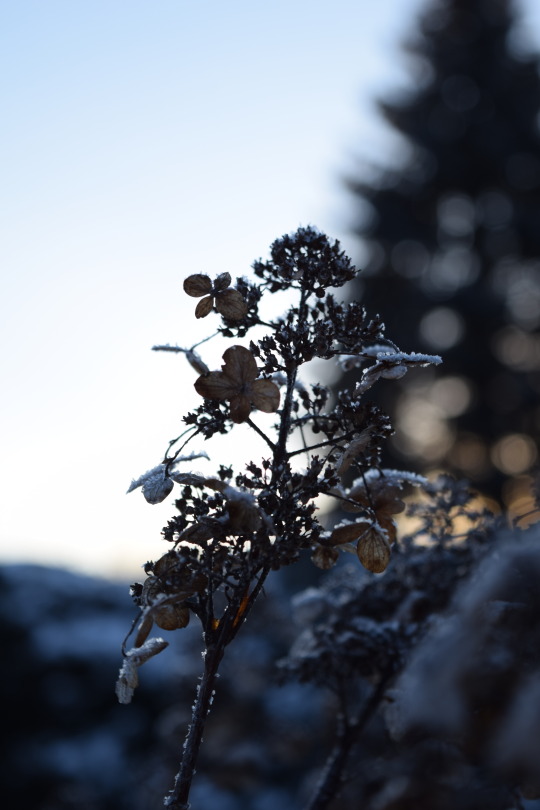
Imbolc (also sometimes named "Candlemas") happens between the 1st and 2nd of February every year. It marks the midway point between Yule and Ostara, also known as the winter solstice and the spring equinox
It celebrates winter coming to an end, to leave space for longer days ahead, and for new things to happen (since nature has been ''dead'' for the last few months, it is now time for it to "rebirth"!)
What to do for Imbolc?
Cleansing, planning new things and starting new projects is a great idea!
Colors for Imbolc are: white, pale yellow, light green, brown, lavender, pink. Wear them, paint them on your nails, put some on your altar!
Crystals for Imbolc are: amethyst, selenite, turquoise, ruby, garnet, bloodstone and onyx, peridot, clear quartz, moonstone. Take one with you if you can!
Make plans for the upcoming spring! Be it planning your garden or activities/travels you want to do, make a bucket list, anything that has to do with planning something
Bake some bread, or make some soup! Leeks, onions and potatoes are really good during this time. You can even try this potato leek soup for this sabbat!
Have a cleansing bath/shower
Start a gratitude/mood journal! Try to keep it up for the whole year so when Yule comes around again, you can look back on it and reflect on your year.
Collect snow for snow water! We won't have snow around for long now at this time of year so take advantage of it!
Start spring cleaning! Start sweeping out the old energies to welcome in the new ones
Divination! Although I always mention it in every post about sabbats, what is special about Imbolc is that some say it's a great sabbat to try new divination methods, or just not use the one you always use. For example, I mostly use tarot cards, but I have Witches Runes that I might prioritize for Imbolc.
Sources: thewitchoftheforest, witchytips and wiccantips on Instagram
#witch#witchy#pagan sabbats#pagan celebrations#sabbats#kitchen witch#kitchen magick#magick#imbolc#wheel of the year#divination#candlemas#witchcraft#kitchen witchcraft#witches of tumblr#witches#crystals#crystal witch
225 notes
·
View notes
Text
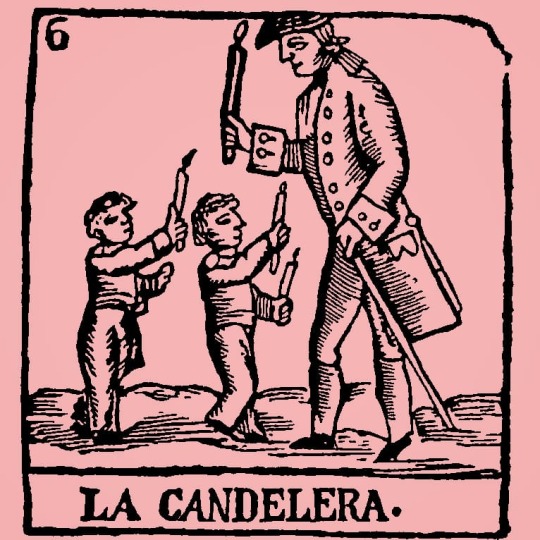
The 2nd of February is the Christian festivity called Candlemas (Candelera in Catalan). It's the date that ends the Christmas cycle, where traditionally people would put away the Nativity scene, though nowadays lots of people take it down soon after Three Wise Men Day (6th of January).
What does this day celebrate?
Candlemas is most likely a remnant of the Ancient Roman festival of Parentalia (last day of the Feralia), celebrated annually in February to remember the dead. During Parentalia, they did processions where they dressed in black and carried little blessed candles to the cemeteries to guide the dead people's souls.
Some say that the origins of Candlemas might also be related to another Ancient Roman festival celebrated in February: the Lupercalia, in honour of the god of fertility and shepherds Lupercus.
In the Christian tradition, this festivity celebrates when Mary brought Jesus to the temple. Biblical scholars explain that it was a tradition for Jewish women to bring their child to the temple 40 days after giving birth. Then, the child was presented to the priests and they were blessed in front of candles, and the woman was purified. Since the Christian tradition says Jesus was born on the 25th of December, 40 days after his birth is the 2nd of February. Candlemas is celebrated every year on this day to commemorate Mary introducing Jesus to the temple. The festivity was introduced officially by Pope Gelasius I in the year 496.
How is Candlemas celebrated?
Believers take candles to be blessed, and some places hold processions with lit candles. The candles are taken home to be kept, because they're believed to have protection powers.
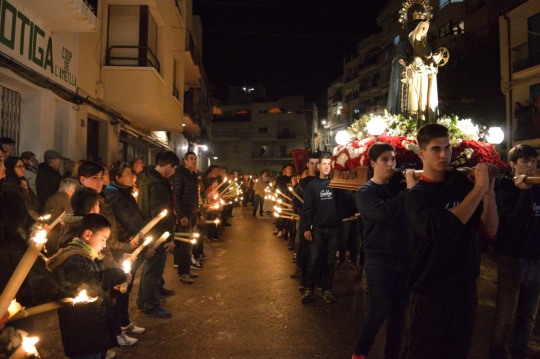
Candlemas procession in L'Ametlla de Mar (Terres de l'Ebre, Catalonia), who celebrates their festa major on this day. Photo: IPCITE.
Unlike other festivals of the Christian calendar (like local patron saint days, Christmas, Three Wise Men Day, Saint Anthony/Three Laps, Saint George, Midsummer/Saint John, Corpus, etc) which are celebrated by everyone in our country, Christian and non-Christian alike; Candlemas is not so widely celebrated by people who aren't Christian believers. But even then, there is one thing that everyone knows Candlemas for: predicting the weather.
In Catalan we have the saying: "Si la Candelera plora, l'hivern és fora. Si la Candelera riu, el fred és viu." which means "If Candlemas cries, the winter is out. If Candlemas laughs, the cold is alive". This sums it up, if it rains on February 2nd it's believed to be a sign that winter is ending. If it's sunny, winter will still go on.
Candlemas is also the day that people in the USA and Canada hold "Groundhog Day", where a groundhog (a rodent animal) is said to predict the same.
Some mountain parts of Europe also remember this date as the day where bears wake up from their hibernation, and many of these places have some festivity about it. In Northern Catalonia, we have the Bear Festivity (Festa de l'Os). In this ancient festivity, which is still done nowadays, some people from the town dress up as bears, while others get all dirty and accompany him running through the town, shouting, whistling and playing music. Others dress up as hunters and run after them. It represents nature waking up from the winter rest, but also the danger that comes with it.

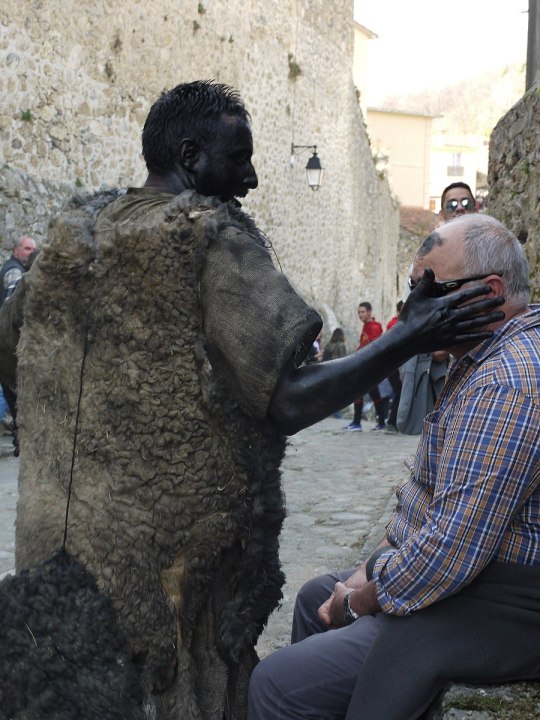
Festa de l'Os in Prats de Molló (Northern Catalonia). Vilaweb and Fabricio Cardenas.
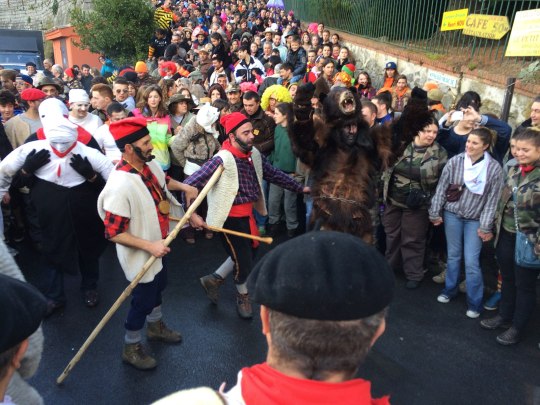
Festa de l'Os in Sant Llorenç de Cerdans (Northern Catalonia). Photographer: Marc Velasco.
The festivity ends when the hunters bring the bear to the town centre and take off his bear skin, turning him into a human. This represents the victory of humans over nature, but scholars also point that it could come from an ancient myth from the Pyrenees according to which humans evolved from bears (for reference, we don't have apes nor monkeys in this part of the world).
#candelera#la candelera#tradicions#candlemas#holidays#cultures#religion#religions#christian#history#festes de l'os#festa de l'os#bear#catalunya nord#sant llorenç de cerdans#prats de molló#ametlla de mar#l'ametlla de mar#feast of the presentation of jesus christ
45 notes
·
View notes
Text

Candlemas (Feb 2) is the last day of what might be considered the traditional Christmas season, and midnight's approaching! Be sure to take down any remaining decorations, because otherwise you might be visited by
SAINT JUSTO, THE CHRISTMAS SAMURAI WHO MAKES YOU PANCAKES.
Saint Justo was a daimyô during the Sengoku period, but his adherence to Catholicism saw him banished from his beloved Japan. He went into exile in Manila, and grew terribly ill from his grief, but wanted to hold on until the Christmas season was over. And when midnight struck at the end of Candlemas, he gave up his ghost.
And now, Saint Justo, having been canonized by the Catholic Church as Blessed Justo Takayama Ukon, and having served you Candlemas Pancakes (or Crêpes, depending on where you live), will use his big sword to chop up whatever decorations you haven't put away. SO PUT AWAY YOUR CHRISTMAS DECORATIONS!!!
#Christmas Samurai#Saint Justo#Christmas Traditions#Candlemas#He'll chop up your old tree but at least you get pancakes
49 notes
·
View notes
Text
I wrote a post trying to figure out why on earth some Pagans & Witches refer to Imbolc (an Irish spring agricultural holiday associated with St Brigid, a potential Christianization of the Goddess Brigid/Bríg) as Candlemas, the completely Christian holiday celebrating The Purification of Mary & Presentation of Jesus at The Temple— which originated in the eastern part of the Roman Empire (which the only "pagan" aspect was it competing with Roman Lupercalia for celebrants).
Many pagan & witch spaces online have a constant disdain for Christianity thus I could not wrap my head around them using such an important point of Jesus' & Mary's life as one of their festivals/'sabbats'.... then, after writing a bunch of stuff, I stumbled onto the answer on Wikipedia's Wheel of The Year page, which has citations for its claims:
Margaret Murray (very early 20th century scholar) in her now discredited witch-cult hypothesis said that the Scottish "witch" Issobell Smyth in 1661 confessed to attending meetings for witches on the cross quarter days included Candlemas. Robert Graves (oh how I loathe you ehem I mean: poet folklorist), mentioned that Candlemas was part of the 8 ancient British agricultural festivals. And Doreen Valiente ("The Mother of Wicca") included Candlemas in her list of Greater Sabbat Fire Festivals, while also listing "Gaelic counterparts," in this case Imbolc.
Sigh.
Early (read: 19th-20th century) paganism and witchcraft, or scholarly work about it, really was just: put every claim regardless of accuracy from any culture in this jar, shake it up real good, see what pops out from the mix, then pretend its historically attested to and traditional despite any and all evidence.
Also whatever Wikipedia writer wrote this, I appreciate your sassiness ... even if it was unintentional:
Due to early Wicca's influence on modern paganism and the syncretic adoption of Anglo-Saxon and Celtic motifs, the most commonly used English festival names for the Wheel of the Year tend to be the Celtic ones introduced by Gardner and the mostly Germanic-derived names introduced by Kelly, regardless whether the celebrations are based on those cultures.
EDIT: To be clear, not all neo/pagans, witches, wiccans, occultists, people-who-use-wheel-of-year are anti-Christian! I'm not trying to say that. But as a worshipper of Mary now, I notice it more and more. Nor am I saying all those people follow Murray/Grave/Valiente blindly but published works and trusted blogs often seem to. This is simply an observation, I've taken notice of, its not the entire communities.
#wheel of the year#imbolc#imbolg#candlemas#pagan#neo pagan#polytheist#witch#annoying history#theres a great post on the actual irish holidays from ya know an irish perspective#but i cant find it#holiday#mariolatry#first sorrow#deletes previous draft#should have just read wheel of year article first#letsdebunk#tag seems appropriate i guess
38 notes
·
View notes
Text

Candlemas. 🕯️
20 notes
·
View notes
Photo

T H E A R T O F R E A D I N G
Candlemas Day, circa 1901
Marianne Stokes
crédit: Tate Britain
#the art of reading#marianne stokes#marianne preindlsberger#candlemas day#candlemas#reading#prayer#religious imagery#candle#art#book#garment#bonnet
182 notes
·
View notes
Text

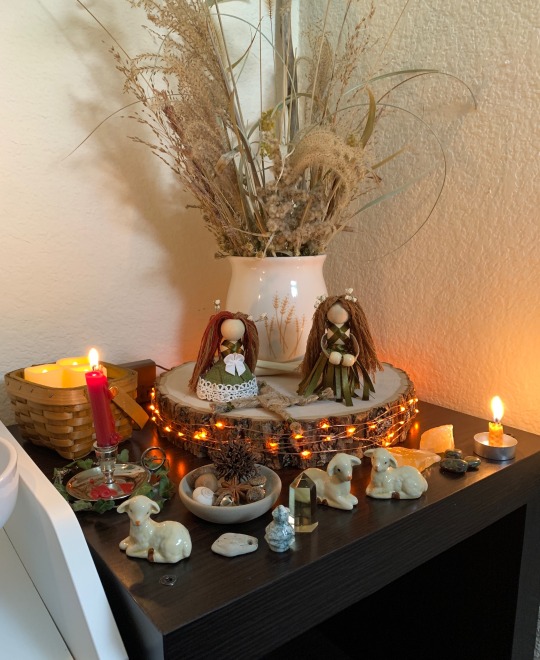
Blessed Imbolc to all 🌟🕯️🤍🔥🌾
#imbolc#imbolg#altar#altar ideas#witch altar#pagan holidays#brigid#saint brigid#candlemas#my stuff#witchblr#witch community#baby witch#witchcraft
27 notes
·
View notes
Text

40 notes
·
View notes
Text

This year's Brighid's Cross. I tried the three-armed version this year, because why not? And of course I used my lovely girlfriend's lovely red hand-spun yarn to tie it, because why not? It's ever-so-slightly too big, and it's a little messy, but it's fine, I'm sure.
14 notes
·
View notes
Text
About Candlemas

It's the middle point between the winter solstice and the spring equinox. In French, there is a proverb: "A la chandeleur, l'hiver meurt ou reprend vigueur". " At Candlemas, winter dies or come back stronger". It's sure it will come back if, paradoxically, it's sunny on February the 2nd. If groundhogs see their shadows, you know...
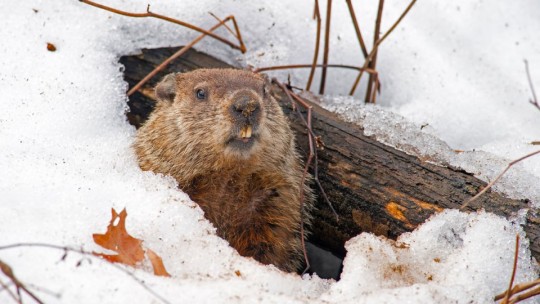
Or bears. Groundhog or bear tradition has pretty much died here, but for a while in Europe Candlemas was called "Bear day", as people watched if bears stopped their hibernation on this day.
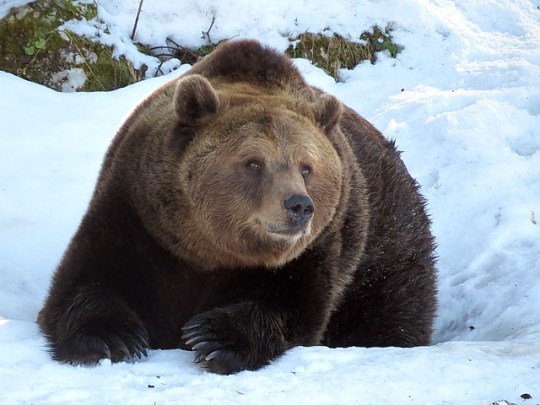
Crêpes tradition is ubiquitous there, because of an obvious symbolism (crêpes are round and golden like the sun). It certainly comes from pagan traditions, but reused after Christianity arrived.
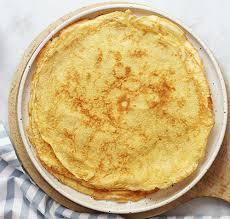
Candlemas is the day of Jesus presented at the temple, and mainly, the tradition was to come back from the church with a candle.

Said candle brought protection, and was lit during storms, notably.

And of course there are the Brigid crosses.

And ta dah, this time I could make mine:

#witch#witchy#witchcore#witchcraft#witch aesthetics#witch aesthetic#witch core#witches#witchblr#aesthetics#candlemas#imbolc#saint brigid
15 notes
·
View notes
Text
“𝘜𝘴𝘦 𝘵𝘩𝘦 𝘤𝘢𝘯𝘥𝘭𝘦𝘴 𝘧𝘳𝘰𝘮 𝘊𝘢𝘯𝘥𝘭𝘦𝘮𝘢𝘴..."

#jesus#catholic#my remnant army#jesus christ#virgin mary#faithoverfear#saints#jesusisgod#endtimes#artwork#Jesus is coming#Jesus speaks#come holy spirit#candlemas#prayer#sacrifice#fasting
14 notes
·
View notes